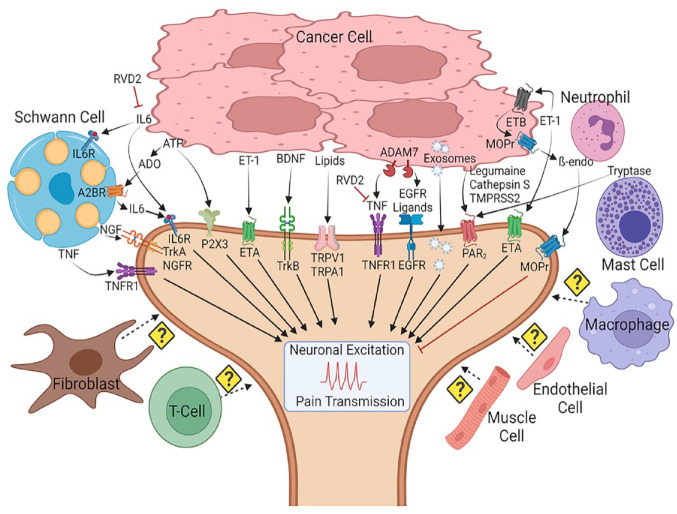Figure 3.
Tumor microenvironment (TME) and TME-derived mediators in cancer progression and associated pain. The TME is a highly interactive environment that includes cancer cells, immune cells, fibroblasts, endothelial cells, muscle cells, Schwann cells, and the primary afferent nerves. The TME secretes an array of nociceptive mediators and exosomes that lead to neuronal excitation and pain transmission. A few endogenous antinociceptive, anti-inflammatory mechanisms such as µ-opioid signaling and prosolving lipids are suppressed in the TME. The role of fibroblast, macrophages, endothelial cells, T cells, and muscle cells in oral cancer pain is unknown. β-endo, β-endorphin; A2BR, adenosine receptor 2B; ADO, adenosine; MOPr, µ-opioid receptor; TNF, tumor necrosis factor α; TNFR1, tumor necrosis factor receptor 1.

